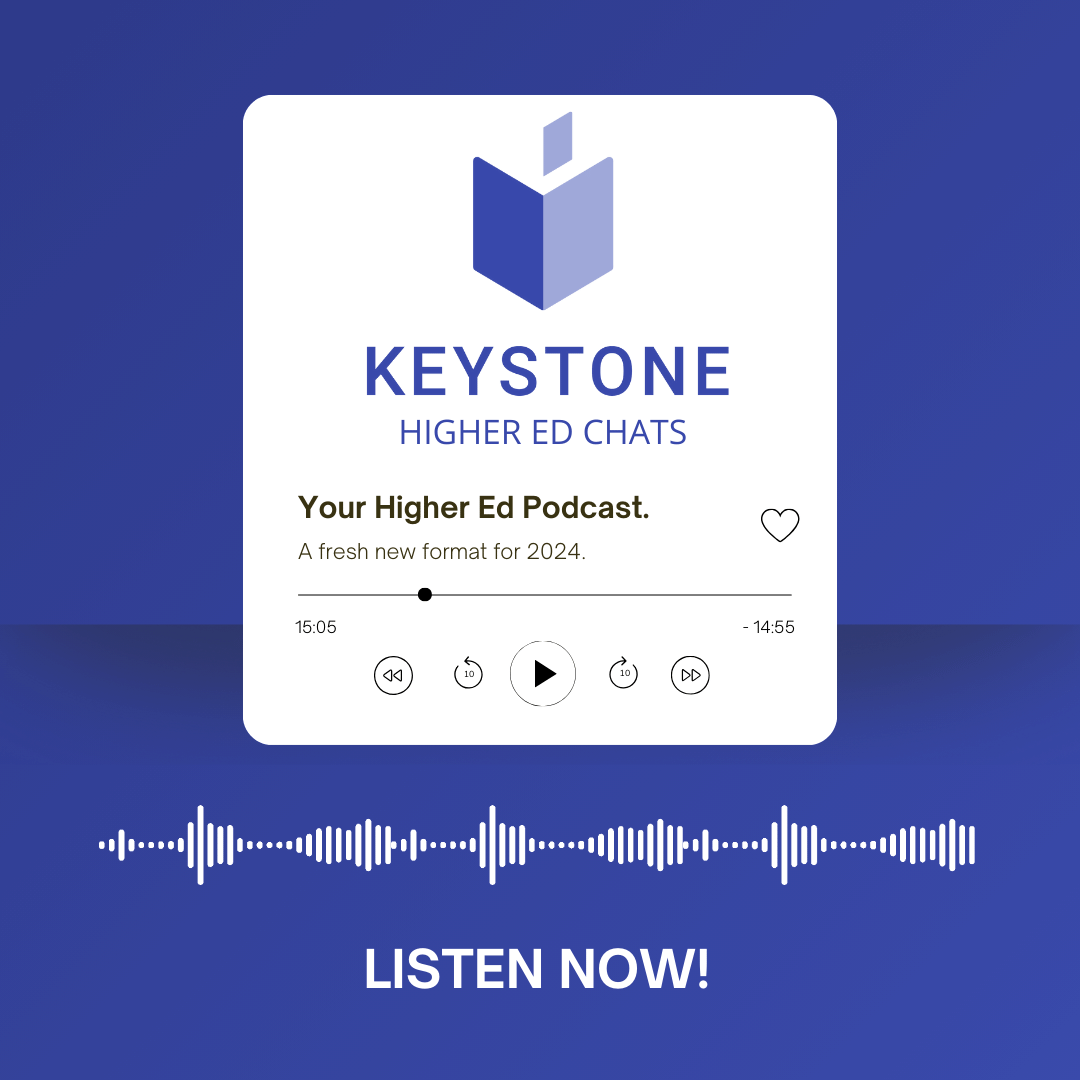- SERVICES
- HIGHER EDUCATION MARKETING
- ENGAGEMENT & ENROLLMENT MANAGEMENT
- STUDENT RECRUITMENT AGENCIES
- PROFESSIONAL EDUCATION & TRAINING
- WHO WE ARE
WHO WE ARE
Learn more about Keystone Education Group, including our leadership structure, why choose Keystone as your educational partner, and company press releases.
QUICK LINKS
- RESOURCES
RESOURCES
Find a range of helpful resources to help with your educational marketing. From on-demand webinars, reports & data, to customer testimonials and our downloadable media kit.
QUICK LINKS
- NEWS
- REQUEST A CALL

- Keystone Higher Education News
- Innovate in Your Student Recruitment: 3 Solutions For 2018
NAGAP, The Association for Graduate Enrollment Management, will hold their annual conference from 11th-14th April, and progressive-minded admission professionals will literally be ‘looking forward' to this year's theme: ‘Sustain and Innovate.'
While the sustaining of strong foundations is of fundamental importance, graduate recruitment marketing is a fast-changing landscape. Delegates can expect to discover and develop vital new strategies for the academic year ahead on their visit to New Orleans this week.
Get the faculty on board
‘It takes a campus to recruit,’ as Argosy University’s Cynthia Worthen reminds us – and admission professionals should not attempt to fight the good fight alone.
An institution’s strongest brand ambassadors are the beating heart of the campus: its students and faculty. A central element of the modernization of enrollment marketing is an increasingly accessible, human face.
Potential students expect not just a list of names, profiles, and credentials, but a transparent insight into what a university’s academics are all about; academics might not feel so positive about providing it! It’s up to marketers to bridge the gap in a number of ways – and it begins with convincing academics that they have a valuable role to play in attracting the most exciting talent to their program.
It can be healthy to frame faculty involvement as communication rather than marketing. Every time a professor speaks in public or publishes anything from a paper to a blog entry to a Tweet, they are communicating the tone, perspective, and rigor of their program and their institution. Indeed, the academic blog has become an extension of the classroom with which a discipline’s broader audience is likely to interact.
Use big data and predictive models
Everyone’s heard about how data-oriented apps and systems are ‘disrupting’ everything from matchmaking to media consumption. These tools have also reached the hands of recruitment professionals who can use them to refine and target the geographic and demographic reach of their campaign.
Students themselves are using big data and predictive analytics to shortlist schools that match their needs, strengths, preferences, and grades. At the other end of the pipe, schools can use inbound data to analyze which students are interested in a program, how likely they are to apply, what forms of communication will be most effective, and even the likelihood of successful graduation.
Of course, this sort of insight is invaluable when it comes to planning, executing, and fulfilling a university’s international recruitment strategy.
Using algorithms not dissimilar from those that have made Spotify and Netflix such hits, the most progressive recruitment teams are honing in on the students that are most likely to be happy and successful at their institution rather than wasting time and money blanket-marketing great swathes of disinterested graduates. Importantly, this means not just filtering existing markets but identifying new ones.
The use of such a customer relationship management (CRM) system allows admission professionals to monitor and predict the progress of potential students up front, get an idea of what a student will decide before they make that decision, and improve graduation rates.
Develop culturally-responsive enrolment management
International students are increasingly multicultural. Markets such as Indonesia, Iran, and Nigeria are witnessing flux in their outbound student numbers due variously to oversubscription or lack of opportunities at home.
Diverse markets call for adaptable communication strategies. Some markets respond differently to familiar academic marketing tropes (Chinese students may respond to an emphasis on facilities while American students react to personalities). Other cultures may be sensitive about religious or linguistic issues. On a more mundane level, some countries have blocks on particular websites and social media networks, while other populations may simply have different preferences as to which social media they use.
The future of marketing education opportunities, then, echoes and prefigures broader trends in technology, society, and consumer behavior – so for a closer look at the nuts and bolts of today’s innovative recruitment strategies, education actors will be keen to secure a seat at the Hyatt Regency later this month!
More about:
Related Tags
Just For You
Top Picks
Higher Ed Chats Podcast
Listen to the latest episodes of our Higher Ed Chats Podcast - new format for 2024. Hear from Higher Ed thought-leaders from around the world!

Webinar: Dos & Don'ts of Higher Ed Social Media
.png?width=500&name=Social%20Media%20Webinar%20March%2024%20Banners%20(3).png)
Join our live webinar on 27th March to hear from a panel of Higher Ed Social Media experts.
Subscribe
to get the latest news and updates





